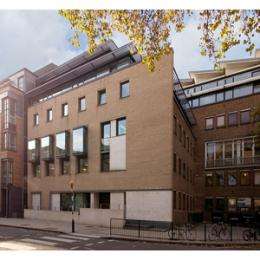Mutated stem cells trigger pituitary tumours in children

(Medical Xpress)—A type of pituitary tumour known as craniopharyngioma appears to form via a different mechanism to that thought to occur in more common tumours, according to a paper in the journal Cell Stem Cell.
The novel findings, generated by a team led by the UCL Institute of Child Health (ICH), will be further explored to better understand how cell signalling triggers the growth of such tumours – the third most common brain tumour in children - and whether new treatments could be devised to block these signals.
The ICH study, funded by the Wellcome Trust, used mouse models to investigate cells in the pituitary gland which are thought to act as stem cells, in that they give rise to all the different cell types in the gland. Researchers used a genetic approach to follow these cells and the 'daughters' they produced, establishing that they did indeed generate new hormone-producing cells across all the different specialised types.
However, when the original cells acquired a genetic mutation often found in the childhood tumour adamantinomatous craniopharyngioma, instead of dividing uncontrollably to generate the tumour, they sent signals to induce changes in nearby cells, causing the latter to divide and give rise to the tumour. The team now needs to determine how widespread this alternative tumour-forming model is across the range of endocrine tumours and cancers.
A type of pituitary tumour known as craniopharyngioma appears to form via a different mechanism to that thought to occur in more common tumours, according to a paper in the journal Cell Stem Cell.
The novel findings, generated by a team led by the UCL Institute of Child Health (ICH), will be further explored to better understand how cell signalling triggers the growth of such tumours – the third most common brain tumour in children - and whether new treatments could be devised to block these signals.
The ICH study, funded by the Wellcome Trust, used mouse models to investigate cells in the pituitary gland which are thought to act as stem cells, in that they give rise to all the different cell types in the gland. Researchers used a genetic approach to follow these cells and the 'daughters' they produced, establishing that they did indeed generate new hormone-producing cells across all the different specialised types.
However, when the original cells acquired a genetic mutation often found in the childhood tumour adamantinomatous craniopharyngioma, instead of dividing uncontrollably to generate the tumour, they sent signals to induce changes in nearby cells, causing the latter to divide and give rise to the tumour. The team now needs to determine how widespread this alternative tumour-forming model is across the range of endocrine tumours and cancers.
More information: www.sciencedirect.com/science/ … ii/S1934590913003123
















